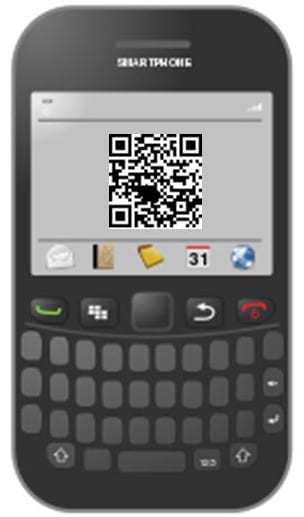A QR (Quick Response) barcode is a type of two-dimensional barcode consisting of black square dots arranged on a white square grid.
Much like the one-dimensional, or UPC barcode, a QR barcode is also a machine-readable label that stores information about the item to which it is attached. Unlike the standard UPC barcode, however, the QR code allows for bigger data storage and higher-speed readability. It was first designed in 1994 in Japan for the purposes of tracking vehicles during manufacture.
In today’s mobile age, QR barcode scanners are made available to individual consumers through their smartphones.
Anybody with a smartphone can download the necessary app to read a matrix code and have instant access to product information directly from the manufacturer’s website. To this end, QR barcodes have become a very effective marketing tool.
With consumers becoming more tech-savvy, companies have to keep up and adapt their marketing strategies to take advantage of available tools for the purposes of increasing their visibility and sales. Traditional advertising strategies employed billboards, print ads, and TV ads to promote a product or a brand; then advertisers moved on to using blimps, the backs of cab driver’s seats, the sides of buses, and bus stop benches to splash their message. The information age added another platform for manufacturers to peddle their wares. The trick was getting consumer traffic from the physical world directed to their virtual pages.
Advertisers and marketers realized the potential of using QR codes as a strategy to not only direct consumer traffic to a brand’s website or social network page, but also to directly track consumer behavior – i.e. to see if the consumer visited the brand’s web page and if a purchase was made, and how popular certain items are based on how many times the attached codes are scanned by consumers.
QR codes can now be found on almost anything –
they are found in magazines, on business cards, on signs, and even on buses – to give consumers fast and easy access to information about the object or product associated with the code. Using a reader application, the consumer can instantly view contact or product information, or connect to a web page.
When a consumer scans a code of a product, such as from a magazine, they are taken directly to the brand’s web page and shown more information about that particular item advertised in the magazine. From there, the reader can buy the item with a single click on their smartphone. Not only does the barcode help sell a product, it also tells the company when and where the ad that led to the sale was scanned.
From the consumer end, the QR code system gives consumers a faster and more convenient access,
literally right at their fingertips, to product information, reviews, and other information. On the business end, traffic to the brand’s website or social network page, and the level of consumer interactivity, are increased and made more effortless. Using QR codes as a direct marketing tool also helps increase the chances that the viewing of the more focused advertisement on a brand’s website or social network page will be converted into an actual sale.
Source: GS1US is an international not-for-profit association with Member Organizations in over 100 countries. GS1US is dedicated to the design and implementation of global standards and solutions to improve the efficiency and visibility of supply and demand chains globally and across sectors.
